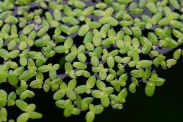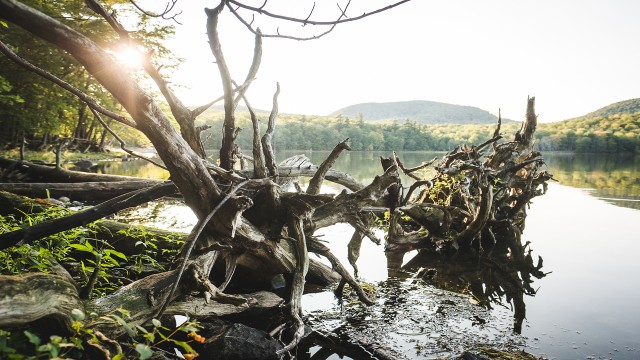UNDERSTANDING HOW DUCKWEED POPULATIONS MAINTAIN DIVERSITY
Enclosures
The wooden structures you see at Dieppe Pond are an enclosure experiment. These enclosures isolate a small part from the surrounding environment, making it easier to study what’s inside. Water and micro organisms can circulate freely, but the enclosures stop macro organisms from getting through, preserving the life forms that the researchers are interested in.
Duckweed
The enclosures were set up for studying duckweed. This is a tiny, green, aquatic plant that floats on the surface of still water. They are so small and grow so fast that hundreds of thousands of individual duckweed plants can live in a single pond in summer. In August, they can even cover the entire surface. As winter approaches, the duckweed sinks to the bottom and, in the spring, some of them rise back to the surface to start a new population.
Genetic diversity
Sexual reproduction is the main source of genetic diversity in a species. Genetic diversity is important in that it helps a population adapt to environmental changes, so the species itself can survive. Without genetic diversity, there would be no evolution. However, for species like duckweed, which reproduce asexually (that is, by dividing), entire large populations can be clones of a single individual.
The study
Led by Mark Jewell, a small group of researchers from the McGill University Department of Biology are measuring the genetic diversity of the duckweed in Dieppe Pond. The researchers suspect that each year, the population goes through a genetic “bottleneck.” If only a small percentage of the population survives the winter and floats back up to the service, then the huge population we see in summer might be clones of only a few plants. If their suspicion is confirmed, the researchers hope to learn how these populations maintain genetic diversity.

